By Graham Healy
One of the most remarkable cyclists ever to emerge from Ireland, is a name that may be unfamiliar to many – “Plugger” Bill Martin. Not only did he make his mark with his performances on the bike, but he has also been credited with some innovations which helped to revolutionise the sport.
Amongst the wins that Martin took during an illustrious career were the first-ever edition of the New York Six-Day race and the Austral Wheelrace in Australia, although his victory in that race in 1901 was shrouded in controversy.
William Walker Martin was born in Dublin on August 4 1860 to Lynam Martin and his wife Jane, née Tuttle. His father was said to have been a good athlete and ice-skater. The family emigrated to America when William was just three years old and they first settled in Maine before moving to Massachusetts.
At the age of 14, Bill left school and started work with what he described later as “a firm of dealers” with his work taking him far and wide. Amongst the places he travelled to as a teenager were England, Portugal, parts of the Mediterranean, South Africa, Madagascar and South America.
Martin’s first sport was what was known at the time as pedestrianism, a 19th-century form of competitive walking. However the sport was losing its appeal towards the end of the 19th century, and Martin took up cycling in 1885, racing as an amateur in Nebraska before turning professional in 1890.
His nickname Plugger was said to have been given to him due to his never-say-die attitude.
It was a great time for Martin to start his professional career, as the sport was really capturing the attention of the American public and over the coming years, there were great opportunities to earn some good money.
Just one year after turning pro, he took one of the biggest wins of his career. In 1891, the first New York Six-Day was organised and the race was dubbed the “long-distance championship of the world.”
The race started after midnight on Monday morning, October 19 in Madison Square Garden and the riders would have to race continuously around a 1/10 mile wooden track for six straight days. Adding to the difficulty of the race, was that the riders raced on Penny Farthings which were also known at the time as high bicycles.
The cyclist who had ridden the furthest by 10 pm on Saturday, October 24 would be declared the winner. The contest was described by the organisers as a “go as you please” race because the riders were allowed to stop, eat, relax and sleep whenever they wanted.
Charles W. Ashinger, also known as the “Oklahoma Boomer” took an early lead which he held into the second day of racing. However, after 300 miles, he was overtaken by Martin.
The lead changed hands between these two over the next few days, but going into the last day, Martin pulled clear and held on to win.
Plugger Bill covered 1466.7 miles over the course of the race with Ashinger in second place having ridden 1441.1 miles with William Lamb in third with a distance of 1382.0 miles.

A report in The Sporting Life describes Martin’s fatigue after the race and also how offers to cash in on his victory came in very soon after his win.
“William Martin, the plucky little Irish-American, who won the race with the great record of 1466 miles, was taken over to the Ashland House early Sunday morning, where he slept soundly until 9 A. M. He awoke of his own accord, took a bath and then had breakfast. After breakfast he took a short walk and returned to the hotel for dinner.
Then he went out sightseeing for a while. He received an offer of $2000 from a dime museum to exhibit himself for two weeks, but has not decided yet whether he will accept it. He said: “I feel splendidly, but my leg hurts a little yet. The track is all right for a sixteen mile an hour gait, but when at ten miles an hour the hills at the curves are too steep.”
Martin returned to Detroit after his win which by that stage he called home. However, his welcome home was somewhat underwhelming according to a report in The Sporting Life which read:
“The testimonial tendered William Martin, the world’s champion long-distance bicyclist, at the Detroit Rink last night, was not what had been hoped for. There was no mad rush for tickets, no suffocating jams on the inside, although the beneficiary went from here comparatively unknown and defeated men of national renown by hundreds of miles. Hardly 1COO people ‘attended”, but among the number were many ardent wheelmen who helped dispel the thoughts of a disappointing gate by able-bodied yelling.”
He raced with more success in the United States over the following years and amongst his wins was the 1892 Minneapolis Six-Day. In addition, in December 1894, according to the Australian Dictionary of Biography, Martin “won both the 10-mile and 25-mile world championships.”
At that time though, there were a number of races around the world which were being proclaimed as being the World Championships.
In 1895 Martin traveled across the Atlantic to race, winning 40 races throughout Europe that year. The following year, Martin was attracted by the big prize money on offer Down Under and made the long journey to Australia to race. He raced in every colony over the next six years, during which time he was said to have won 249 races.
However, he was also involved in numerous controversies. In a race in Adelaide in 1896, he assaulted another cyclist and the following year, he beat up a spectator at a race who had been abusing him. Also in 1897, he beat up a committee member who had been banned him from racing the previous year. He ended up spending two weeks in gaol for that particular offence.
His beating up of the official and his subsequent conviction was described in The Sportman on 19 October 1897 with the headline “”Plugger” Martin goes to Gaol”
“Fancy! Bill Martin in gaol for fourteen days. And hard labour, too ! The treadmill will be no novelty to him. It will be like cycle riding, and Bill will rather enjoy the exercise.
Joking apart, however, it is a pity that so fine a cyclist as “Bill” is should so far forget himself.
Here are the facts in a nutshell. Bill entered for the Adelaide carnival on Saturday week. He rode badly, and the crowd jeered him. He was brought before the stewards and suspended. The officials displeased him, and he used language of a rough and scorcher character.
Subsequently with his open hand he smacked Mr. F. P. Ridley on the face. His open hand was a bit heavy, and it left bruises and black eyes behind it.
Martin came up on the following Monday on two charges. On the charge of suspicious riding he got off. The other charge, that of assault, he was not dealt with, the person concerned preferring to take the genial American before the law court.”
Martin’s biggest win during this time was the Austral Wheel Race in 1901. The race which was first run in 1887 is the oldest track bicycle race in the world still existing. In those early years, the race was held at the Melbourne Cricket Ground and according to reports, the crowd was estimated at over 30,000 and had paid a record £1307.
Riders are assigned handicaps in the race, and Martin would start from scratch. According to an article in The Barrier Miner, Martin “won easily after a splendid sprint. Martin received a splendid ovation. Beauchamp was disqualified for 12 months.”
The disqualified rider – Frank Beuchamp – was disqualified as he had been accused of riding to help Martin win, rather than for himself.
The race would be mired in further controversy when it was alleged that the race had been fixed. Massive wagers had been placed on the race. The amount gambled was said to have been a world record for a bike race and, according to one MCC member, “the place was simply alive with bookmakers, from the foot of the steps right down of the front fence.”
The man accused of fixing the race was John Wren who was said to have backed Martin to win to the tune of £7,000.
Despite the controversy surrounding his win, he was still held in high regard and one particular cycling reporter in 1902 described him as follows:
“By winning the great Austral wheel race from scratch, ‘Plugger Bill’ has proved himself to be the best all-round cyclist in the world. He has won races of every description from a quarter of a mile to six days and is known throughout the world as one of the gamest riders that ever crossed a saddle.”
Plugger Bill wasn’t just a great cyclist though. According to an article in The Sydney Morning Herald on 2 Apr 1942, Martin was the person behind such ideas as toe clips and pursuit racing. Below is the excerpt from the article.
NEW IDEAS
“Martin introduced many ideas which were soon universally adopted by both racing: and touring cyclists.
He was the first to use pedal straps in addition to toe clips to secure his feet firmly to the pedals; the first to extend his handlebars out on an “out-rigger” stem; and the first to make a success of using a gear in the 90’s for track racing.
When he came here, the Australian champions – Jack Parsons, Joe Megson, R. H. Walne, W. C. Jackson, C.B. Kellow, to mention some of the more prominent rode track racing bicycles fitted with gears between 70in and 80in. Martin and his companion, M. Porta, an Italian champion, brought machines with 92in. The only other rider known in Australia, with such a high gear was a New Zealander, H. C. Pittar.
After Martin’s first afternoon’s racing, the cycle shops were besieged by racing men demanding alterations to their handlebars and gears to make them like “Plugger Bill’s”.
Another innovation of Martin’s was pursuit racing. While racing in America, finding that other strong riders would permit him to make all the pace and finish too swiftly for him, he developed the idea of two men in a match starting at opposite sides of the track and riding the distance of the race unpaced.
He tried it against another American rider in Sydney, overtook him in a few miles, and defied every effort to shake him off again.
Martin had a notable victory over the great Victorian rider. Jack Parsons, at this style of riding. They made a match over a distance of about 20 miles, each man to have a team of tandems to pace him, and the starting points to be half a lap apart. Martin’s team of pacers broke down and left him unassisted; undaunted, he fought on, gradually wore Parsons down, and won.”
After he retired, Martin became the owner of a hotel in Bourke Street, Melbourne and later at Prahran. In Prahran, he purchased what was described in The Moree Gwydir Examiner and General Advertiser as “a valuable freehold property consisting of two shops and an old established hotel, in Chapel Street, Prahran, the purchase money running into thousands of pounds. When Martin arrived in Melbourne with Porta, in 1895, his banking account was a small one, and to make close upon £10,000 in a little over six years stamps Martin as good a business man as he is a rider.”
He married in 1903 and later went to New Zealand, where he reared a family of two sons and three daughters.
He returned to Australia years later where he tried his hand at prospecting before working for an optician.
He would race again though in his later years. At the age of 73, he took to the track again at the Melbourne Cricket Ground where in September 1933, he finished in third place in the Old Timer’s Austral Wheel Race. The race had been Bill’s idea as he wanted to raise money for the Children’s and St. Vincent’s Hospitals.
In 1942, Plugger Bill Martin passed away in Perth at the age of 82, leaving behind an incredible legacy.



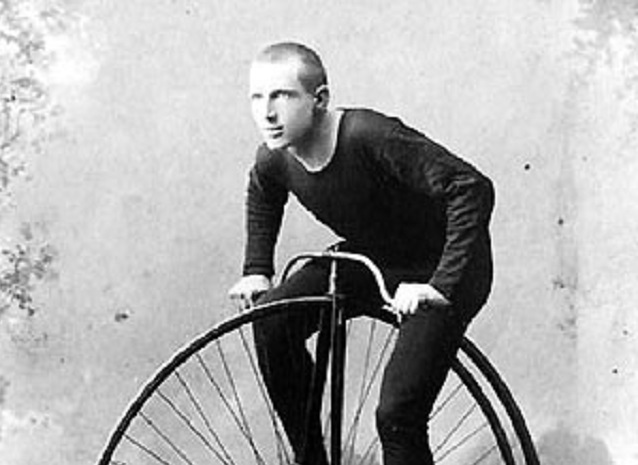

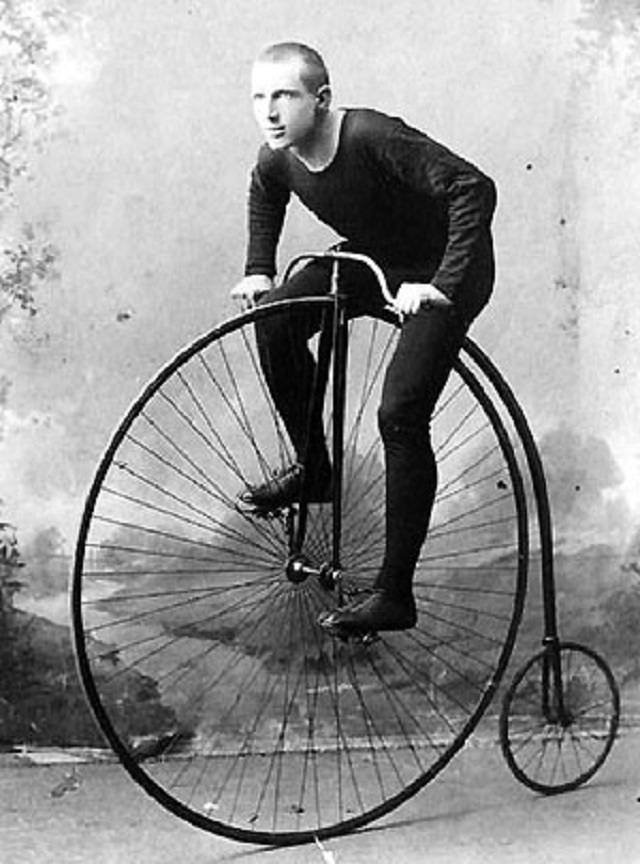

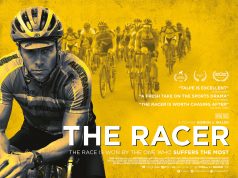
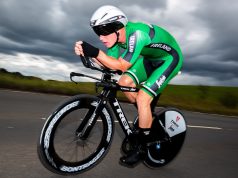
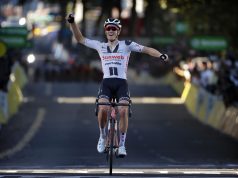

Very interesting Bio . Thanks for posting.